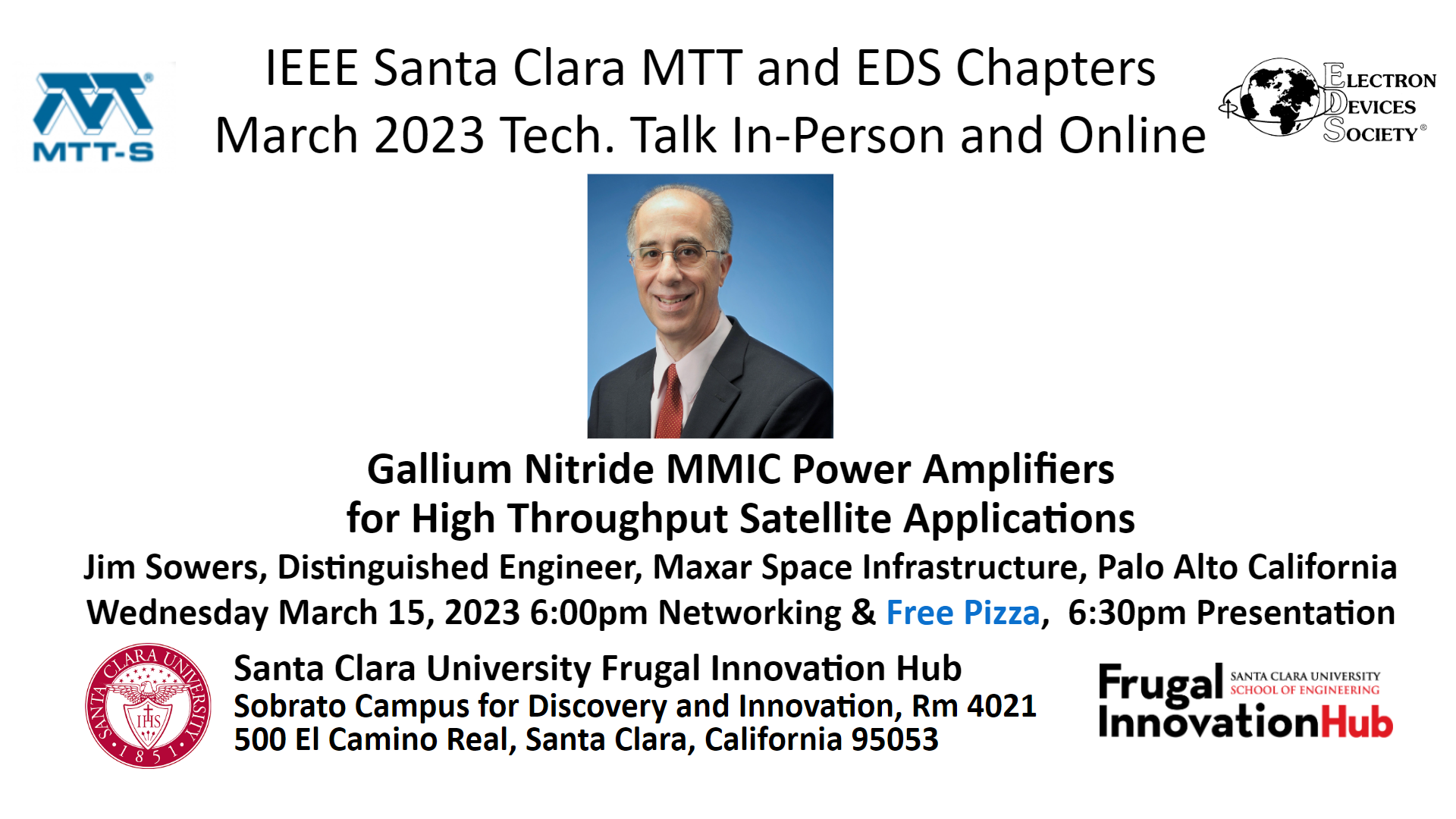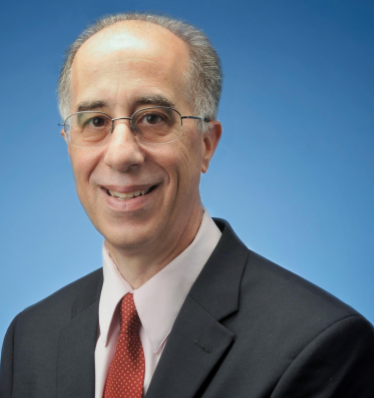Gallium Nitride MMIC Power Amplifiers for High Throughput Satellite Applications

Learn what it takes to develop and deploy high-reliability, space-qualified, 20 GHz, 10 Watt High-Gain GaN IC Amplifier Modules from Industry Veteran and Distinguished Maxar Engineer Jim Sowers.
Date and Time
Location
Hosts
Registration
-
 Add Event to Calendar
Add Event to Calendar
- Santa Clara University Frugal Innovation Lab
- Santa Clara, California
- United States 95053
- Building: SCDI 4201
- Room Number: 4201
- Click here for Map
- Contact Event Hosts
- Co-sponsored by Electron Devices Society–Santa Clara Valley/San Francisco Chapter
Speakers
 Jim Sowers of Maxar Technologies
Jim Sowers of Maxar Technologies
Gallium Nitride MMIC Power Amplifiers for High Throughput Satellite Applications
There is a need for Solid State Power Amplifiers (SSPA’s) to be used in High Throughput Satellites (HTS) for commercial applications. Specifically when the amount of information passed through the transponders, i.e. capacity, is determined mainly by the quantity of beams the satellite can generate. This application is well suited for SSPA’s over the conventional TWTA solution as they are smaller and lighter weight enabling a simplification of HTS payload architectures, higher density physical integration, and the ability to support active array transmit solutions all of which increases the quantity of beams and thus capacity. More specifically, Gallium Nitride (GaN) Power Amplifiers (PA’s) have shown the ability to generate high RF output power levels with small size and high efficiency thereby enabling step function improvement in capacity. This paper will describe a 20GHz fully space qualified GaN PA module developed for KaBand commercial satellite downlinks. The design techniques, test results, and screening regimen required to meet the demanding performance and reliability requirements will be given. The result is a 20GHz module with >55dB of gain, >10W of Pout, >30% peak PAE, and NPR >15dB. To the authors knowledge this is the best fully space-qualified module performance at this frequency published to date.
Biography:
Jim has 40+ years of experience designing, developing, and manufacturing of RF, microwave, and millimeter-wave microelectronic components for satellite payloads as well as communication and radar systems for commercial and military use.
He is currently Payload Technical Partner for Unit Design Engieering and a Distinguished Engineer at Maxar Space Infrastructure. His responsibilities have encompassed the development of space-qualified, RF active, payload components from C-Band through V-Band including GaN Power Amplifiers, LNA’s, Receivers, Linearized Channel Amplifiers, Local Oscillators and MMICs. Additional responsibilities included Payload Manager for large Ku and Ka Band programs. Joining SS/L in June 1999, he was the Section Manager for Repeater Subsystems Electrical Engineering.
Preceding employent at SS/L, Mr. Sowers was with Lockheed Martin/Martin Marietta/GE Aerospace and was responsible for the research, design, and development of microwave and millimeter-wave MMICs and components for advanced radar and communications systems.
After graduating from Cornell University with a BSEE Jim joined Varian Associates where he was responsible for the research, design, and development of InP Gunn and IMPATT devices and circuits at V and W Bands. Receiving his Master of Science degree from Stanford University he subsequently took a position with Harris Microwave Semiconductor to develop RF/Microwave amplifiers for the military market.
Jim is a Life Senior Member of the IEEE, and has served on the Technical Program and Steering Committee of several IEEE conferences and is a past chair of the IEEE MTT Society -Santa Clara Valley Chapter. Additionally, he maintains an Adjunct Professor position at Santa Clara University.
Address:United States
Media
| Parking Options | These free parking options outside Santa Clara University Campus are a short walk to the venue. | 827.11 KiB |
| Map to Event | This map shows the Santa Clara University Campus Map and the location of SCDI room 4021 | 154.65 KiB |
